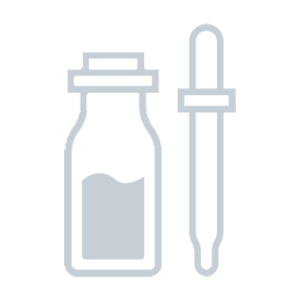
Sanitas Skincare Brightening Peel Pads is a product with 13 ingredients. Contains: AHA - Glycolic Acid, Lactic Acid; BHA - Salicylic Acid;
Organic score: 38% natural, 62% chemical. Vegan - No; Cruelty free - No; Reef safe - Yes;
Positive effects
Concerns
INCI - Full Breakdown
Water is a great solvent. It’s neutral and doesn’t provide any strong positive or negative effects. It just helps components to mix better and to transport active components.

Alcohol Denatured is a great bacteria killer. Manufacturers often put it inside products to increase their shelf life.

Glycolic Acid is the most researched AHA with proven efficiency and it’s a super powerful component. It’s a great exfoliator, meaning it helps to remove dead skin cells preventing bacterial growth, and make your skin look fresh and smooth. It helps to remove dark spots and areas, making skin tone even. But the most serious reason for using this component is that it helps to produce collagen, which is very important for keeping your skin healthy. This is what makes Glycolic Acid so special. Pay attention, that using any AHA makes your skin more UV sensitive. It’s very important to use good sunscreen after applying AHA.
Polysorbate 20 doesn’t have any notable skin benefits but is used in cosmetics quite often. Manufacturers use it for formulation purposes. It improves the scent, texture, and feel of the product.

Salicylic Acid is an amazing component for oily skin. It’s a famous BHA that chemically exfoliates dead cells, kills bacteria, and prevents acne. It works as a strong pores cleanser. AHAs are not effective for removing sebum from pores, while BHAs are leaders in this space. Salicylic Acid also helps to shrink pores, remove acne scars and make skin tone even. Pay attention: concentration matters! This ingredient is rather aggressive. It can lead to irritation in high concentrations. If your skin has never seen this component before test the product first.
Lactic Acid is the most popular and the least aggressive acid among all the AHAs. Unlike Salicylic and Glycolic acids which can irritate your skin, Lactic Acid will hardly cause any problems. The combination of its soft action and effectiveness makes it a real brilliant. It exfoliates dead cells, makes the skin tone even, clears pores, kills bacteria, moisturizes the skin and helps to keep water, helps the cells to produce Hyaluronic Acid. It also works as a strong antioxidant and anti-aging component.
It's a great acid for getting familiar with the world of AHAs. If you want to start using "fruit acids" but struggling for some reason, try to use Lactic Acid first. If your skin accepts it well, you can try stronger acids.


Sodium PCA is a nice moisturizer and skin softener. It contains amino acids and Sodium Hyaluronate. It’s part of the Natural Moisturizing Factor (NMF) that is responsible for keeping the outer layer of the skin hydrated. If you don’t have enough NMF you can face dryness even if you don’t have other skin problems.
Fragrance is a mix of chemical ingredients (usually 20-30 chemicals but up to 200 sometimes) that help the product to smell better. It can hide many bad things. Synthetic fragrances may contain many different chemicals, but manufacturers don’t want to reveal each of them for some reason and hide them behind the word "Fragrance".
Phenoxyethanol is one of the most popular preservatives. It kills bacteria and makes the product live longer. Manufacturers like this ingredient because it can dissolve in any liquid, even in oils.
Another purpose of this component is the fixation of aromas in perfumery. Phenoxyethanol is also used as a strong antiseptic and a good antibacterial agent. It is widely used in dermatological cosmetics alongside natural antiseptics such as chamomile, sage, and calendula.
Functions
Reviews
The product doesn't have reviews. Be the first to share your experience.







